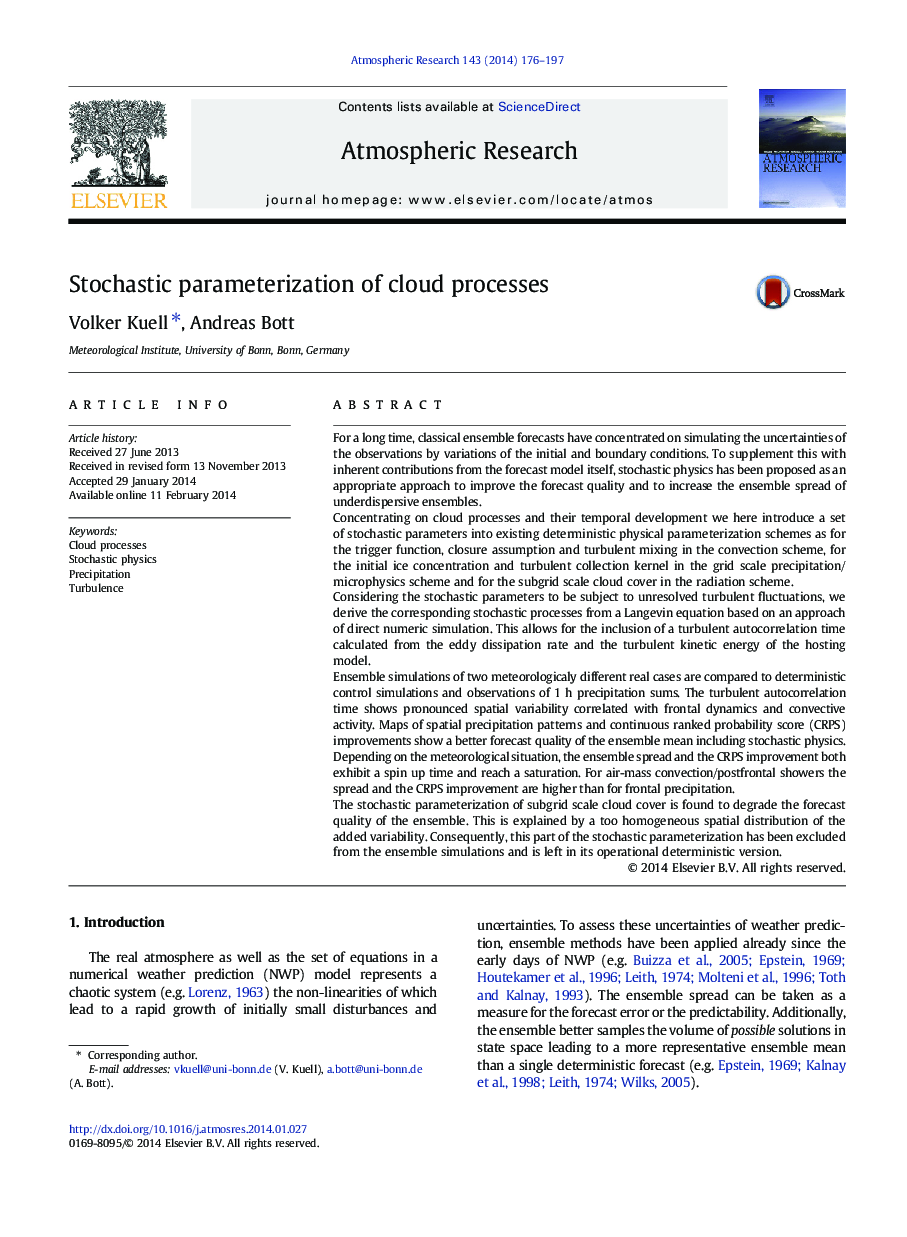| کد مقاله | کد نشریه | سال انتشار | مقاله انگلیسی | نسخه تمام متن |
|---|---|---|---|---|
| 4449902 | 1620528 | 2014 | 22 صفحه PDF | دانلود رایگان |
• We introduce stochastic parameters into physical parameterization schemes.
• We concentrate on turbulence driven parameters of cloud processes.
• In the stochastic processes the autocorrelation time is derived from model physics.
• Ensemble skill and spread for precipitation show spin up effects.
• Except for subgrid scale clouds stochastic physics increases skill.
For a long time, classical ensemble forecasts have concentrated on simulating the uncertainties of the observations by variations of the initial and boundary conditions. To supplement this with inherent contributions from the forecast model itself, stochastic physics has been proposed as an appropriate approach to improve the forecast quality and to increase the ensemble spread of underdispersive ensembles.Concentrating on cloud processes and their temporal development we here introduce a set of stochastic parameters into existing deterministic physical parameterization schemes as for the trigger function, closure assumption and turbulent mixing in the convection scheme, for the initial ice concentration and turbulent collection kernel in the grid scale precipitation/microphysics scheme and for the subgrid scale cloud cover in the radiation scheme.Considering the stochastic parameters to be subject to unresolved turbulent fluctuations, we derive the corresponding stochastic processes from a Langevin equation based on an approach of direct numeric simulation. This allows for the inclusion of a turbulent autocorrelation time calculated from the eddy dissipation rate and the turbulent kinetic energy of the hosting model.Ensemble simulations of two meteorologicaly different real cases are compared to deterministic control simulations and observations of 1 h precipitation sums. The turbulent autocorrelation time shows pronounced spatial variability correlated with frontal dynamics and convective activity. Maps of spatial precipitation patterns and continuous ranked probability score (CRPS) improvements show a better forecast quality of the ensemble mean including stochastic physics. Depending on the meteorological situation, the ensemble spread and the CRPS improvement both exhibit a spin up time and reach a saturation. For air-mass convection/postfrontal showers the spread and the CRPS improvement are higher than for frontal precipitation.The stochastic parameterization of subgrid scale cloud cover is found to degrade the forecast quality of the ensemble. This is explained by a too homogeneous spatial distribution of the added variability. Consequently, this part of the stochastic parameterization has been excluded from the ensemble simulations and is left in its operational deterministic version.
Journal: Atmospheric Research - Volume 143, 15 June 2014, Pages 176–197
